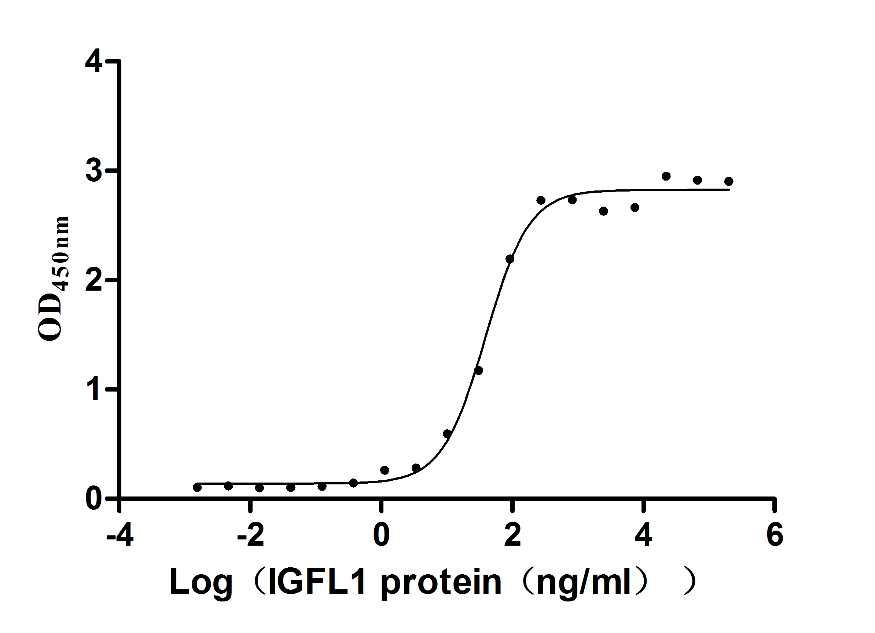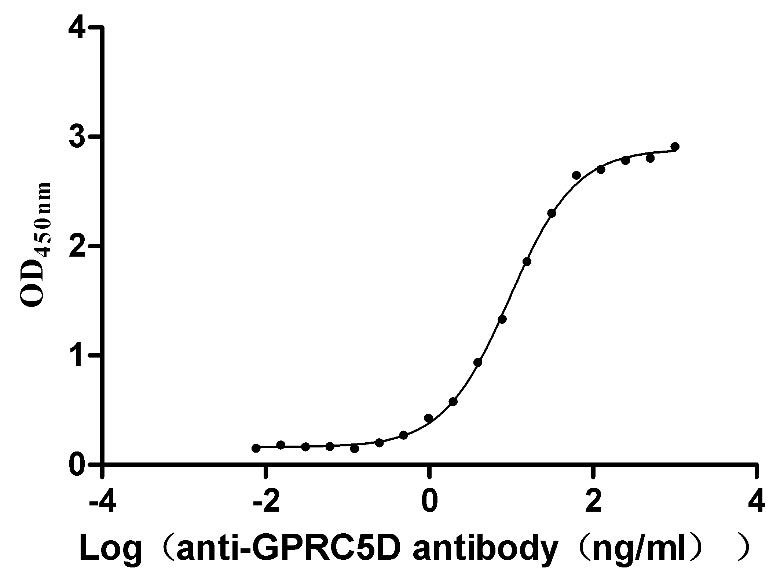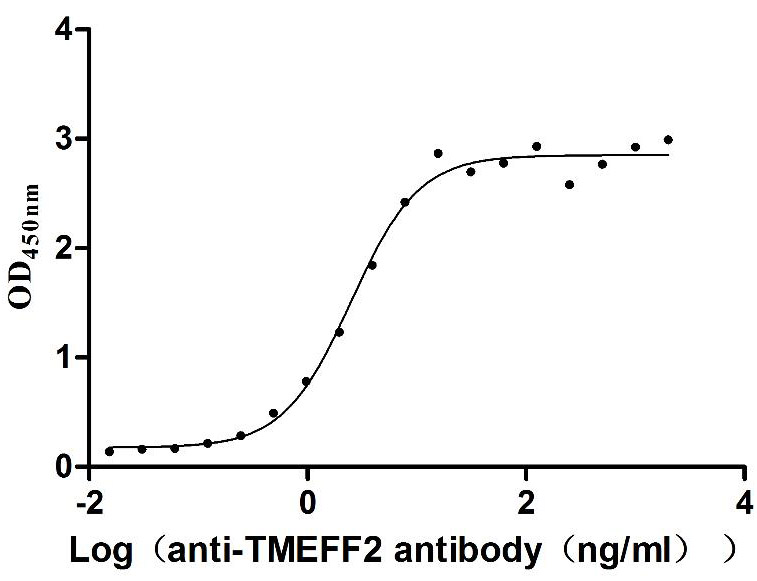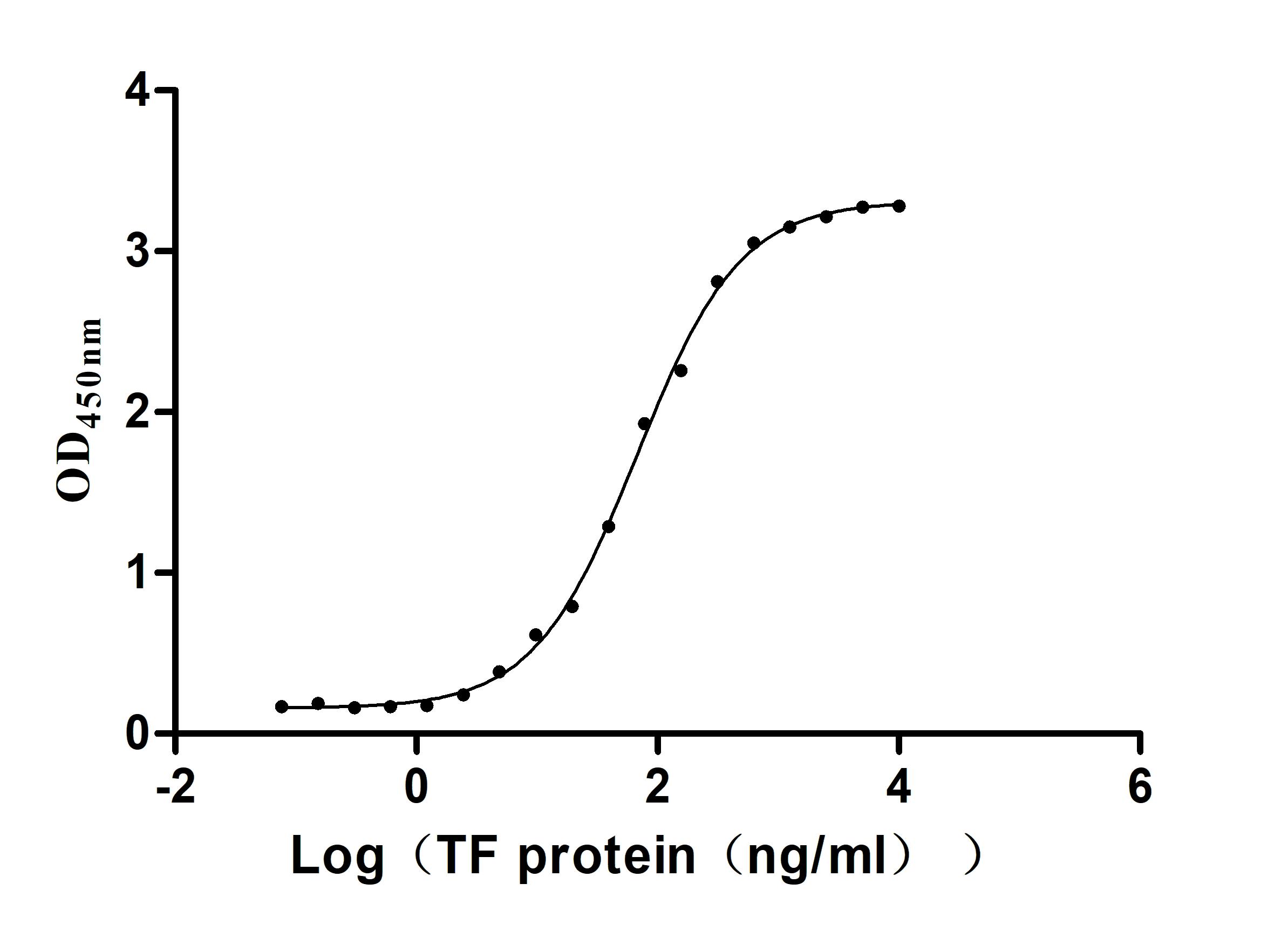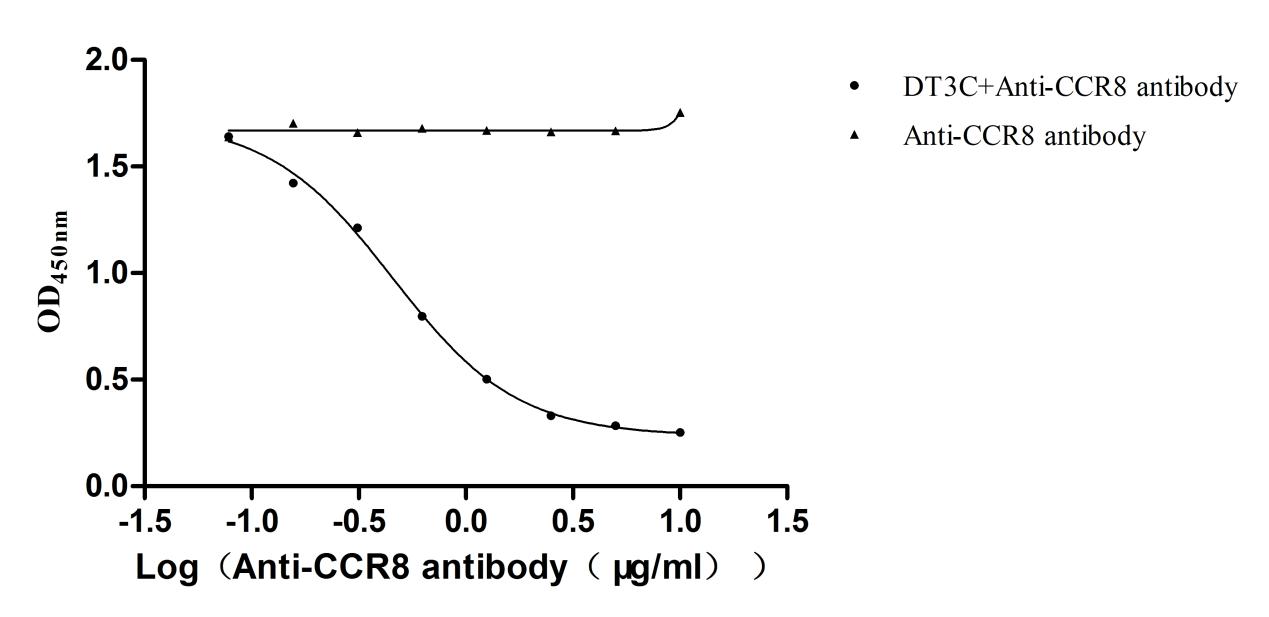Recombinant Saccharomyces cerevisiae ATP-dependent helicase SGS1 (SGS1), partial
-
中文名称:酿酒酵母SGS1重组蛋白
-
货号:CSB-YP327403SVG
-
规格:
-
来源:Yeast
-
其他:
-
中文名称:酿酒酵母SGS1重组蛋白
-
货号:CSB-EP327403SVG
-
规格:
-
来源:E.coli
-
其他:
-
中文名称:酿酒酵母SGS1重组蛋白
-
货号:CSB-EP327403SVG-B
-
规格:
-
来源:E.coli
-
共轭:Avi-tag Biotinylated
E. coli biotin ligase (BirA) is highly specific in covalently attaching biotin to the 15 amino acid AviTag peptide. This recombinant protein was biotinylated in vivo by AviTag-BirA technology, which method is BriA catalyzes amide linkage between the biotin and the specific lysine of the AviTag.
-
其他:
-
中文名称:酿酒酵母SGS1重组蛋白
-
货号:CSB-BP327403SVG
-
规格:
-
来源:Baculovirus
-
其他:
-
中文名称:酿酒酵母SGS1重组蛋白
-
货号:CSB-MP327403SVG
-
规格:
-
来源:Mammalian cell
-
其他:
产品详情
-
纯度:>85% (SDS-PAGE)
-
基因名:SGS1
-
Uniprot No.:
-
别名:SGS1; TPS1; YMR190C; YM9646.02C; ATP-dependent helicase SGS1; EC 3.6.4.12; Helicase TPS1
-
种属:Saccharomyces cerevisiae (strain ATCC 204508 / S288c) (Baker's yeast)
-
蛋白长度:Partial
-
蛋白标签:Tag type will be determined during the manufacturing process.
The tag type will be determined during production process. If you have specified tag type, please tell us and we will develop the specified tag preferentially. -
产品提供形式:Lyophilized powder
Note: We will preferentially ship the format that we have in stock, however, if you have any special requirement for the format, please remark your requirement when placing the order, we will prepare according to your demand. -
复溶:We recommend that this vial be briefly centrifuged prior to opening to bring the contents to the bottom. Please reconstitute protein in deionized sterile water to a concentration of 0.1-1.0 mg/mL.We recommend to add 5-50% of glycerol (final concentration) and aliquot for long-term storage at -20℃/-80℃. Our default final concentration of glycerol is 50%. Customers could use it as reference.
-
储存条件:Store at -20°C/-80°C upon receipt, aliquoting is necessary for mutiple use. Avoid repeated freeze-thaw cycles.
-
保质期:The shelf life is related to many factors, storage state, buffer ingredients, storage temperature and the stability of the protein itself.
Generally, the shelf life of liquid form is 6 months at -20°C/-80°C. The shelf life of lyophilized form is 12 months at -20°C/-80°C. -
货期:Delivery time may differ from different purchasing way or location, please kindly consult your local distributors for specific delivery time.Note: All of our proteins are default shipped with normal blue ice packs, if you request to ship with dry ice, please communicate with us in advance and extra fees will be charged.
-
注意事项:Repeated freezing and thawing is not recommended. Store working aliquots at 4°C for up to one week.
-
Datasheet :Please contact us to get it.
靶点详情
-
功能:ATP-dependent DNA helicase able to unwind duplex DNA or DNA- RNA heteroduplex. Displacement of the DNA strand occurs in the 3' to 5' direction with respect to the single-stranded DNA flanking the duplex. Acts as an integral component of the S-phase checkpoint response, which arrests cells due to DNA damage or blocked fork progression during DNA replication. Can create a deleterious topological substrate that TOP3 preferentially resolves. The TOP3-SGS1 protein complex may function as a eukaryotic reverse gyrase introducing positive supercoils into extrachromosomal ribosomal DNA rings. Together with topoisomerase II has a role in chromosomal segregation. Maintains rDNA structure where it has a role in re-starting stalled replication forks.
-
基因功能参考文献:
- These studies collectively illustrate that Sgs1 participates in both branches of DNA-damage tolerance and possibly plays a role in pathway choice PMID: 28918480
- Recently, we and others have uncover a direct link between the Smc5/6 complex and Sgs1. Most roles of Sgs1 during recombination, including DNA end resection, Holiday junction dissolution, and crossover suppression, are regulated through Mms21-dependent SUMOylation PMID: 27664093
- Sgs1 and BLM regulate R-loop-associated genome instability. PMID: 29042409
- Double deletion of Sgs1 and Mph1 abolishes the REC-mediated lag observed during the repair of large gaps and break-induced replication substrates. PMID: 27075725
- Sgs1 mutants impaired in recognition of SUMOylated Smc5/6 (sgs1-SIMDelta) or SUMO-dead alleles (sgs1-KR) exhibit unprocessed HJs at damaged replication forks, increased crossover frequencies during double-strand break repair, and severe impairment in DNA end resection PMID: 27298337
- The role of Sgs1 in crossover formation during meiotic recombinational repair PMID: 25329811
- Sgs1 unwinds trinucleotide repeat hairpin completely by translocation mediated unwinding. PMID: 26004439
- Escape of Sgs1 from Rad9 inhibition reduces the requirement for Sae2 and functional MRX in DNA end resection. PMID: 25637499
- Mutation of the Sgs1 helicase impairs recombination and meiosis. Deletion of the Top3 interaction domain of Sgs1 causes a top3-like phenotype. PMID: 18272435
- resection processivity defect in sgs1-D664Delta cells alters affinity of DNA ends for HR proteins. PMID: 24097410
- Identification of a short segment within the first 125 residues of the intrinsically disordered N-terminus of unbound Sgs1 that has transient alpha-helical structure whose integrity is essential for Sgs1 function in vivo. PMID: 24038467
- Checkpoint activation in G1 requires the catalytic activity of Sgs1, suggesting that it is DNA resection mediated by Sgs1 that stimulates the damage response pathway. PMID: 23835406
- The hDNA data are consistent with the proposed role of Sgs1 in the dissolution of double Holliday junction (HJs), and we propose that Srs2 dismantles nicked HJs. PMID: 23516370
- Sgs1 is required for dsDNA unwinding and, unexpectedly, also has a structural role in DNA strand passage. PMID: 22885009
- Sgs1 is a primary regulator of recombination pathway choice during meiosis and suggest a similar function in the mitotic cell cycle. PMID: 22500736
- These data reveal Sgs1 as a central regulator and mediator of meiotic Holliday junction-containing joint molecules resolution, with unanticipated roles in both noncrossover and crossover formation. PMID: 22500800
- Sgs1 plays a role in transcriptional regulation and acts as a repressor of a subset of rapamycin responsive genes. PMID: 21639830
- Study provides evidence that Sgs1 interacts with various partner proteins to maintain genome stability throughout meiosis. PMID: 21085703
- the Helicase/RNase D C-terminal domain and the Rad51 interaction domain are dispensable for Sgs1's role in suppressing genome instability, whereas the zinc-binding domain and the helicase domain are required PMID: 21111748
- a sub-domain of the Sgs1 N-terminus that shows in vitro single-strand DNA (ssDNA) binding, ssDNA annealing and strand-exchange (SE) activities PMID: 20389284
- full-length Sgs1 binds diverse single-stranded and double-stranded DNA substrates, including DNA duplexes with 5'- and 3'-single-stranded DNA overhangs PMID: 20086270
- MMR-independent role in the suppression of RAD51-independent recombination. PMID: 15611162
- identification of two pathways through which Sgs1p contributes to genomic integrity PMID: 15616582
- Sgs1 associates with Mre11 in different subcomplexes folowing checkpoint activation and CDK1-mediated Srs2 phosphorylation. PMID: 15964827
- These data support a model in which defects in lagging-strand replication are repaired by the Mus81 endonuclease or through a pathway dependent on Rad51 and Sgs1. PMID: 16193328
- Sgs1p participates in a RAD52-dependent recombinational pathway of telomere maintenance. PMID: 16428246
- Sgs1 has helicase-dependent functions in replication and helicase-independent functions in DNA double-strand breaks (DSB) repair by homologous recombination (HR). PMID: 16705162
- SGS1 suppresses spontaneous, recurring translocations between diverged genes in cells with mutations in the genes encoding the checkpoint proteins Mec3, Rad24, Rad9, or Rfc5, the chromatin assembly factors Cac1 or Asf1, and the DNA helicase Rrm3. PMID: 16809776
- These findings show that Sgs1 has potent meiotic anti-CO activity, which is normally antagonized by SIC/ZMM proteins. PMID: 17002499
- the sgs1 rad27 double mutant displayed a shortened replicative lifespan and was also more sensitive to DNA-damaging agents PMID: 17506834
- Saccharomyces cerevisiae BLM ortholog, Sgs1, prevents aberrant crossing-over during meiosis by suppressing formation of joint molecules (JMs) comprising three and four interconnected duplexes. PMID: 17662941
- Sgs1 suppresses spontaneous unequal sister-chromatid exchange (SCE), and SGS1 and EXO1 regulate spontaneous SCE by independent mechanisms. PMID: 18166135
- Sgs1 RecQ helicase inhibits survival of Saccharomyces cerevisiae cells lacking telomerase and homologous recombination PMID: 18757364
- In the absence of Srs2 or Sgs1, DNA damage accumulates and is processed by homologous recombination, triggering repeat rearrangements. PMID: 19136956
- Mre11 nuclease interacts with Dna2 plus Sgs1 and has a role in Rad51-dependent recombinational repair PMID: 19165339
- these results suggest that the Sgs1 function in repair of DNA replication intermediates can be uncoupled from its role in homologous recombinational repair. PMID: 19214189
- Data show that Sae2 and the Sgs1 RecQ helicase control two distinct but partially complementary pathways for nucleolytic processing telomeres, with Sae2 function requiring its serine 267 phosphorylation. PMID: 19595717
显示更多
收起更多
-
亚细胞定位:Nucleus, nucleolus.
-
蛋白家族:Helicase family, RecQ subfamily
-
数据库链接:
KEGG: sce:YMR190C
STRING: 4932.YMR190C
Most popular with customers
-
Recombinant Human IGF-like family receptor 1 (IGFLR1), partial (Active)
Express system: Mammalian cell
Species: Homo sapiens (Human)
-
Recombinant Human G-protein coupled receptor family C group 5 member D (GPRC5D)-VLPs (Active)
Express system: Mammalian cell
Species: Homo sapiens (Human)
-
Recombinant Human Tomoregulin-2 (TMEFF2), partial (Active)
Express system: Mammalian cell
Species: Homo sapiens (Human)
-
Recombinant Human Serotransferrin(TF) (Active)
Express system: Mammalian cell
Species: Homo sapiens (Human)
-
Recombinant DT3C (Diphtheria toxin & spg 3C domain) for Antibody Internalization Assay (Active)
Express system: E.coli
Species: N/A


